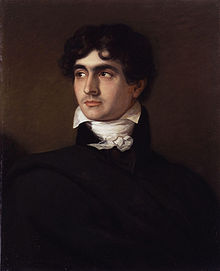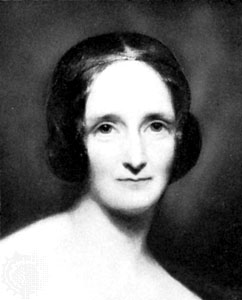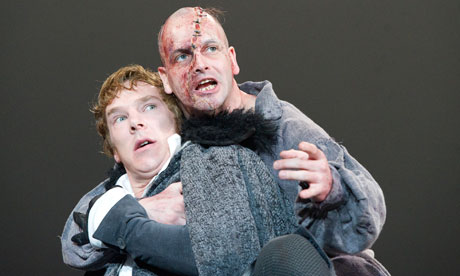Percy and Mary and John and George sat in their sail boat on Lake Geneva, their imagination floating, their fantasy racing; fast forward 200 years, we are still reading Vampyre and Frankenstein. Those people's collective creativity impregnated their Muses with a new species in the literary menagerie.
Villa Diodati had been a place filled with ghosts of literature even before Lord Byron's party spent the summer of 1816 there. Cologny, a small town near Lake Geneva, is surely a place haunted with imagination just by the sound of it.
Villa Diodati had been a place filled with ghosts of literature even before Lord Byron's party spent the summer of 1816 there. Cologny, a small town near Lake Geneva, is surely a place haunted with imagination just by the sound of it.
Irish critic and poet Professor Edward Dowden wrote Life of Shelley, the book accounted for the poet's personal history, and incidentally included the story of the Cologny party. You could see a portion of his work at Gutenberg Project.
 |
| Polidori |
The significant members of the party were: Lord Byron, the arrogant team leader, genius poet and adventurous traveler; Percy Shelly, the conscientious friend, aspiring writer, who's madly in love with Mary Wollstonecraft (who later became Mary Shelly) while unhappily married to Harriet Westbrook; Doctor John Polidori, physician (need I say more?); and Claire Clairmont, Mary 's cousin without whom the Shellys would probably never meet, and at the same time, Byron's adoring "fangirl" and later became the mother of his short-lived daughter Allegra Byron.
"Let's write ghost stories, shall we?" Suggested Byron, confined in the villa thanks to the terrible weather of Scandinavian summer, the Lord and his companions had to figure out ways to pass the time. On June 16th, the party started drafting. When you put a bunch of poets and a physician together, there's no doubt that you'll get some fantastical stories with striking imagination and realism simultaneously. Shelly's poetic Fragment of Ghost Story (see below):
A shovel of his ashes took
From the hearth's obscurest nook,
Muttering mysteries as she went.
Helen and Henry knew that Granny
Was as much afraid of Ghosts as any, 5
And so they followed hard--
But Helen clung to her brother's arm,
And her own spasm made her shake.
 |
| Percy B. Shelley |

The short-lived unfortunate poet was eventually out-shined by her second wife's fame. Mary's Frankenstein, which was a product of the ghost-story-writing-spree, marked the beginning of scientific enlightenment in 19th century. A young girl 19 years of age, created a story about humanity and society: a metaphor and cautionary tale of what we are capable of doing and the danger of playing God. Infinitely relevant it is, Frankenstein is still read by young and aged alike, from which everybody can extract something valuable. In 2011, Nick Dear and Danny Boyle's (Dir. ) production of Frankenstein at National Theatre in London featured Benedict Cumbercatch and Jonny Lee Miller, both of whom alternated as Victor Frankenstein and the creature. Interestingly, Miller had also, early on in 2003, played Byron in the BBC mini series written by Nick Dear. Read Ben Brently's NYTimes review of the production here.

June 18. — My leg much worse. Shelley and party here. Mrs. S called me her brother (younger). Began my ghost-story after tea. Twelve o'clock, really began to talk ghostly. L B re- peated some verses of Coleridge's Christabel, of the witch's breast ; when silence ensued, and Shelley, suddenly shrieking and putting his hands to his head, ran out of the room with a candle. Threw water in his face, and after gave him ether. He was looking at Mrs. S, and suddenly thought of a woman he had heard of who had eyes instead of nipples, which, taking hold of his mind, horrified him...etc. (from Polidori's Diary)It was believed that John Polidori was the sole author of The Vampyre, yet according to his own diary, Byron's early fragments provided the initial outline.The story went on to inspire later tales including Nosferatu, the template of the ever-so-popular blood-sucking, lustful creatures of the night.
There was a big fall out between Byron, Shelley and Polidori
and the physician even threatened to shoot Shelley. Scholars and
publishers later on pulled their hairs out trying to determine the true
authorship of the Vampyre tale. Of course, all we can say is that there
must have been exanges of ideas and mutual inspirations amongst the
party of writers and, well, dreamers. That summer in Switzerland, Lake
Geneva witnessed the infancy of vampire stories and ghost tales that
will go on to haunt literary world for the centuries to come. The party
in Cologney, Villa Diodati might had just been a footnote in the
biographies of the late poets and novelists. The room that once housed
the brilliant ideas of Milton, Byron and Mrs Shelley, etc, became
forever a turning point in the history of literature, and a birthplace
of an entirely unique genre.
Here's some important Gothic horror stories that shaped the development of said genre:
- Bram Stoker's Dracula, published in 1897. Indubitably the most influential vampire tale of all time.
- Nosferatu the Vampyre: A German film adaptation of Dracula. Nosferatu means phantom of the night.
- Mary Shelley's Frankenstein from Literature.org. One of my personal favourite piece of literature of immense importance beyond its genre.
- E-book version of Polidori's Vampyre, believed to be inspired by Lord Byron. I thought it's quite believable.
(It would be lovely if you could tell me what else to include in the list, for I'm not entirely familiar with the Gothic horror genre save for the few in its infancy.)

No comments:
Post a Comment